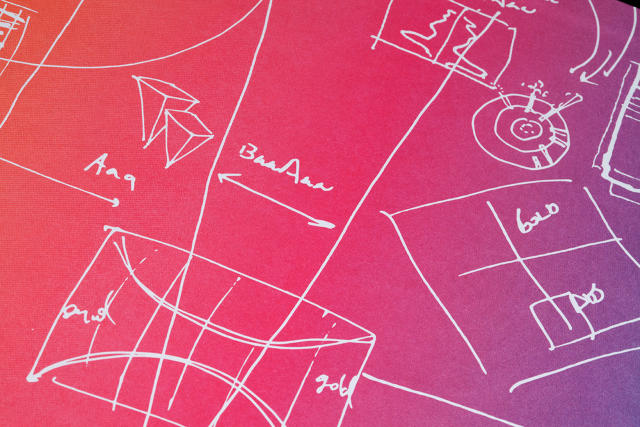The graphic design of the finance world is stodgy, boring, old-fashioned, and marvelously conservative. But money is sexy. So when approached by an influential group of New York security analysts to design a book predicting the future of the stock market, Pentagram partner Eddie Opara aimed to give them a design that was just as exciting and dynamic as money itself.
Published by the New York Society of Security Analysts (NYSSA) in celebration of its 50th year, High Yield Future Tense: Cracking the Code of Speculative Debt is a thick bible that presents the outlook for high-yield bonds—riskier bonds with a higher chance of profit than other types of bonds—as a selection of think pieces, infographics, and formulas from some of the all-stars of the futures world. Approached by NYSSA to design the book, Opara at first had his doubts. “I mean, let me put it this way: If you were a designer, and someone approached you with a book with this title, wouldn’t you think carefully before taking the job on?” he laughs.

What eventually brought Opara on board was NYSSA’s promise that it expected something very different from the usual finance tome. Looking at Amazon’s finance section together, Opara showed me the kind of graphic design he was specifically trying to avoid. “Not to get personal, but these designs all have the aspect of DIY books,” he says. “They look like they’re from the ’80s or ’90s. And when you open the books up, they look like some exam you have to do for accounting class.”
So for High Yield Future Tense, Opara and his team at Pentagram set out to break the mold. The cover has four ultra-modern typefaces (Larish Neue, Domaine Sans Display, Px Grotesk, and Danmark) that vie for readers’ attention. Opara says these typefaces weren’t picked because they necessarily evoked money, but because they created an effect right from the get-go that this wasn’t a book for conservatives, or people living in the past. This was a book for people who aren’t afraid to rip open the future of the high-yield bonds market.

Broken into four sections—market dynamics, active management, analytical innovation, and benchmarking—the book continues to use typography and color as organizing elements throughout, with each section getting its own dominant color and typeface. Colored ribbons, meanwhile, make it easy to flip open to the correct section. Perhaps the most “traditional” nod to the world of finance comes by way of the individual contributor portraits, which are done in a style reminiscent of the Wall Street Journal’s stipple hedcuts.

According to Opara, the most time-consuming element in High Yield Future Tense to design were the illustrations, or graphical “exhibits.” The volume contains more than 168 such exhibits, including 111 charts and graphs and 57 tables. These were challenging for Opara and his team to get right, often because the book’s authors had to explain the financial meaning to the group. When they understood what these charts were about, though, Pentagram realized that these weren’t just stuffy bar charts and line graphs. They were stories, predicting the cause and effect of millions or perhaps billions of dollars being made or lost. Designing each exhibit so it told its story properly ended up requiring so much brainstorming that the end papers of High Yield Future Tense are just Pentagram’s notes and sketches, trying to work out the problem.

The design element of High Yield Future Tense that Opara is most proud of is how the book handles its 31 math formulas. Regular joes won’t make heads or tails of them, but to finance types, the formulas are literally amazing, Opara says: secret equations to die for, published for the first time by some of the greatest minds in the financial world. Opara decided to handle these formulas almost like Playboy centerfolds, pulling them out and turning them on their side so that High Yield Future Tense’s readers can appreciate their beauty.
“For a long time, I’ve wondered why finance books aren’t designed to exude the importance of what they’re stating,” Opara says. “Why are these books so incredibly bland, when it’s not bland content, especially for the person who can see the real content behind the words?” Finance books, Opara says, deserve the same graphical design treatment as books about fashion or architecture, because finance is also about design. “Finance is about trying to design a methodology for us all to live better, richer lives,” he says. And that makes High Yield Future Tense one of the few finance books that looks the part.
All Images: courtesy Pentagram
